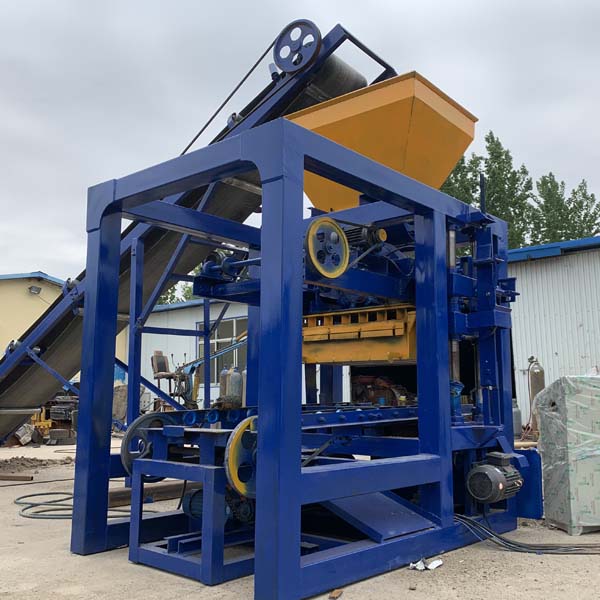
In the quest for innovation and progress, the construction industry is undergoing a profound transformation with the advent of high-efficiency block machines.
These cutting-edge technologies are redefining the way we build, revolutionizing traditional construction practices, and paving the way for a more sustainable and resource-efficient future.
This essay delves into the remarkable impact of high-efficiency block machines on construction, exploring their key features, advantages, challenges, and the broader implications they hold for the future of the built environment.
The Rise of High-Efficiency Block Machines
Traditional construction methods often involve manual labor, lengthy timelines, and variable quality in building materials.
However, the emergence of high-efficiency block machines has changed the landscape dramatically.
These advanced machines utilize state-of-the-art automation, precision engineering, and innovative design to transform raw materials into high-quality building blocks at an unprecedented rate.
The utilization of these machines represents a paradigm shift, from conventional construction to a more streamlined, efficient, and reliable approach.
Unveiling Key Features and Advantages
High-efficiency block machines are characterized by a host of groundbreaking features that set them apart from their predecessors.
Advanced automation and computerized controls ensure consistency in block dimensions, density, and surface finish.
This precision not only enhances the overall aesthetics of constructed buildings but also contributes to their structural integrity and durability.
Moreover, these machines are designed for versatility, enabling the production of a wide range of block types and sizes to suit diverse construction needs.
The modularity of the machines allows for easy adaptation, ensuring that builders can swiftly adjust their processes to meet specific project requirements.
One of the most significant advantages of high-efficiency block machines is their potential to revolutionize construction timelines.
By automating the block-making process, these machines significantly reduce the time required for construction projects.
This accelerated pace not only results in cost savings but also addresses the growing demand for timely project completion.
Promoting Sustainable Construction Practices
In an era of heightened environmental awareness, high-efficiency block machines have emerged as catalysts for sustainable construction practices.
These machines are designed to optimize the use of resources, minimize waste generation, and reduce energy consumption.
By utilizing recycled materials and environmentally friendly binders, they contribute to the reduction of the construction industry’s carbon footprint.
Furthermore, the superior quality of blocks produced by these machines ensures that the constructed buildings have a longer lifespan.
This longevity not only minimizes the need for frequent repairs and renovations but also reduces the overall demand for new construction materials.
In essence, high-efficiency block machines embody the principles of circular economy by promoting resource efficiency and minimizing waste.
Challenges and Pathways Forward
While the benefits of high-efficiency block machines are compelling, their widespread adoption is not without challenges.
One notable hurdle is the initial investment required to acquire and implement these advanced technologies.
Small and medium-sized construction firms, in particular, may face financial constraints that hinder their ability to embrace these innovations.
Additionally, ensuring a skilled workforce capable of operating and maintaining these machines is crucial to maximizing their potential benefits.
To address these challenges, a multi-pronged approach is essential.
Government incentives, industry collaborations, and research initiatives can play a pivotal role in driving down the costs associated with high-efficiency block machines.
Furthermore, vocational training and education programs can equip construction workers with the necessary skills to effectively leverage these technologies.
Shaping the Future of Construction
The rise of high-efficiency block machines is not just a technological advancement; it is a transformative force shaping the future of construction.
As these machines become more accessible and integrated into construction processes, we can expect a profound shift in how we conceive, design, and build structures.
The increased speed and precision offered by high-efficiency block machines hold the potential to accelerate construction timelines and unlock new possibilities in architectural design.
The modular nature of these machines enables builders to experiment with innovative shapes and forms, leading to the creation of iconic structures that were previously deemed impractical or time-intensive.
Furthermore, the sustainable practices promoted by high-efficiency block machines align with global efforts to combat climate change and promote responsible resource management.
As the construction industry strives to meet stringent environmental standards, these machines offer a concrete pathway to reducing the industry’s environmental impact.
In conclusion, high-efficiency block machines are at the forefront of a construction revolution.
Their advanced automation, precision engineering, and commitment to sustainability are redefining how we build the structures that shape our world.
By unveiling the key features and advantages of these machines, addressing their challenges, and exploring their implications for the future, we gain a comprehensive understanding of their transformative potential.
As the construction industry continues to evolve, high-efficiency block machines will play a central role in shaping a more efficient, sustainable, and innovative built environment.
By embracing these technologies, we embark on a journey toward a future where construction is not only about erecting buildings but about building a better future for generations to come.
